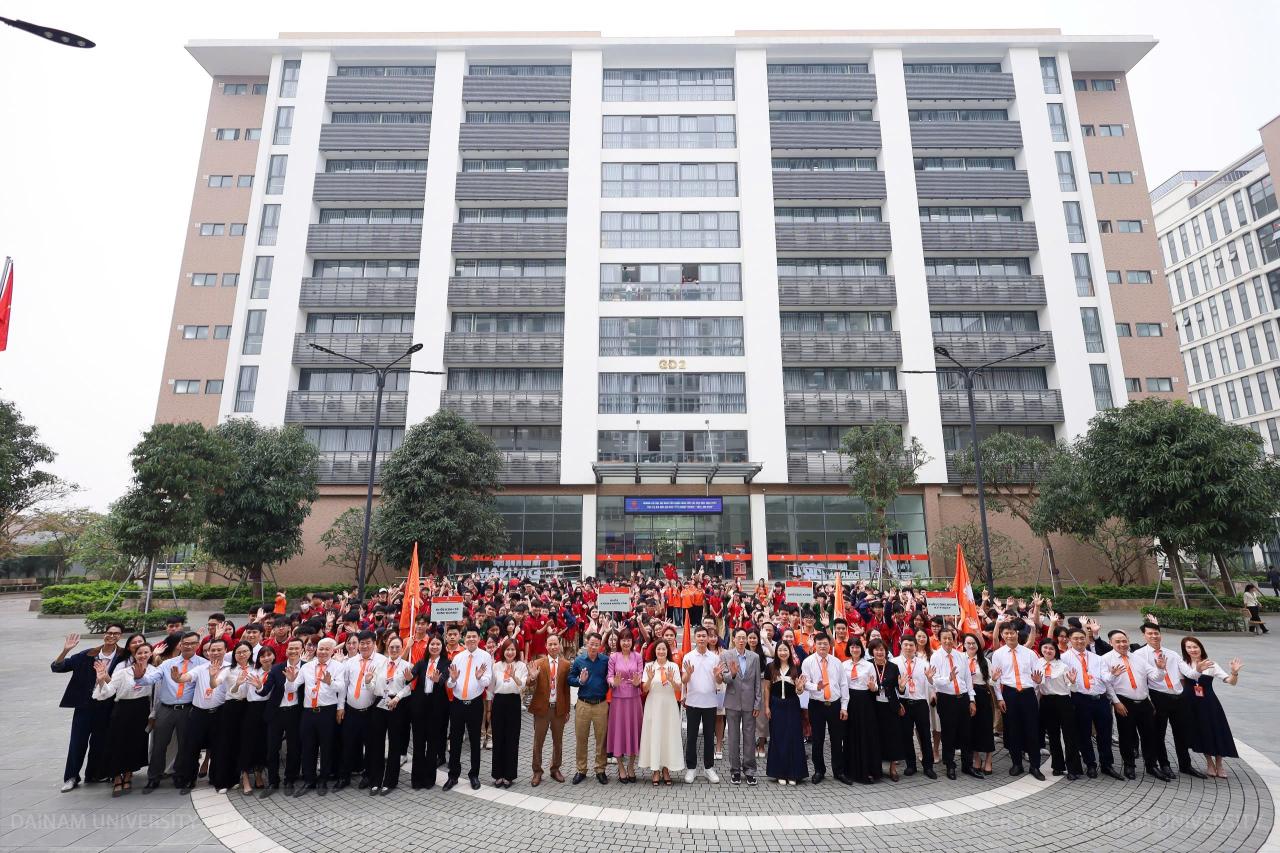Merging commercial banks in the process of restructuring Vietnam's banking system

Dr. Vu Thi Nhai - Lecturer of Faculty of Finance and Banking - Dai Nam University
We are currently implementing the restructuring process of the Vietnamese banking system, in which merging banks together is considered an effective solution. However, in reality, there have been many mergers, but how effective they are is a matter of great concern not only to politicians, academics, business people but also to people - investors. Effective mergers must be activities that bring true values to shareholders, customers, employees and above all, bring stability and development to the economy. Through mergers, investors can easily participate in banks and those banks have the conditions to develop to a new level, conquering domestic and foreign markets.
1. Mergers
During the process of formation and development of the credit institution system in Vietnam, there have been many mergers and dissolutions, and each stage depends on the orientation and development goals of the industry set by the State Bank of Vietnam.
In the period of 1989-1990, there was a crisis in production and business establishments such as Thanh Huong Perfume, Dai Thanh, ... which went bankrupt, causing hundreds of credit cooperatives and credit funds to be dissolved. In the years 1992-1993, implementing the state's policy, a number of credit cooperatives merged together to form banks such as Nam A Bank, Dai Nam, Mekong, Nam Do, Viet Hoa, Que Do, Phuong Nam, De Nhat, Gia Dinh, Tan Viet, Saigon Thuong Tin, An Binh, ...
In the period 1997-2004, there were many mergers of rural joint stock commercial banks into urban joint stock commercial banks such as Tan Hiep Bank merging into Dong A Bank, Thanh Thang Bank merging into Saigon Thuong Tin Bank,... Especially the merger of three banks Dong Thap, Dai Nam and Cai San into Phuong Nam Bank. The reason for these mergers was that small banks were operating inefficiently, on the other hand, these rural banks wanted to merge to develop into stronger urban commercial banks.
Implementing the project "Restructuring credit institutions in the period of 2011-2015" with the goal of building a strong credit institution system, the State Bank has set out a series of mandatory requirements for banks such as minimum capital of 3,000 billion VND, liquidity requirements, bad debt ratio, etc. Faced with these requirements, a number of commercial banks have begun to carry out mergers. The first was the merger of three banks De Nhat, Tin Nghia and Saigon in December 2011 to form Saigon Joint Stock Commercial Bank. The reason was that these three banks had liquidity difficulties, using short-term capital for medium and long-term loans, and each bank only had capital of about 1,000 billion VND. Faced with that situation, the State Bank provided liquidity support to the three banks and they voluntarily merged to promote their strengths, support each other to build a larger bank. However, objectively we see that this is only a mechanical merger and this merger has not brought about economic or social efficiency.
The next case was the Hanoi Housing Development Joint Stock Commercial Bank (Habubank) which was merged into Saigon-Hanoi Bank (SHB) in August 2012. At that time, Habubank was considered a bank with a high bad debt of 32% due to lending Vinashin customers about 3,700 billion VND that they were unable to repay. When merging into SHB, the Habubank brand that had been built since 1989 disappeared forever, the stock value was evaluated as 1 Habubank = 0.75 SHB, the members of the Board of Directors of Habubank were not in the new SHB. What we are interested in is that after the merger into the new SHB, the capital of the new SHB was 8,866 billion VND, while before that, Habubank was only evaluated as 195 billion VND (the capital of the old SHB was 4,816 billion VND)???
Unlike other mergers that were forced to restructure the state bank, in December 2013 DaiABank merged with Ho Chi Minh City Development Bank (HDBank) on the voluntary basis of both parties to enhance financial capacity and management and administration capacity. After the merger, HDBank has a charter capital of VND 8,100 billion, the exchange rate of DaiA Bank shares to HD is 1:1. This is the first merger in history when both parties are relatively good banks, have no problems with financial capacity, and voluntarily merge to create a bank with strong potential and greater competitiveness in the market.
The first model conversion in history from a joint stock commercial bank to a single-member limited liability bank owned by the State was the case of Vietnam Construction Joint Stock Commercial Bank in January 2015. This is a bank with the operating principle of a multi-purpose commercial bank focusing on serving the construction sector. After a long period of ineffective operation, losing capital due to bad debt, the bank could not pass the plan to supplement charter capital to ensure the real value of the minimum charter capital, so the State Bank bought all shares of this bank at a price of 0 VND and handed it over to the Bank for Foreign Trade of Vietnam to manage and operate.
In April 2015, the next bank to be valued at 0 VND and transferred to the management of the Vietnam Joint Stock Commercial Bank for Industry and Trade was Ocean Commercial Joint Stock Bank (Ocean Bank) because this bank lost all its capital and its executive board was in trouble with the law.
Faced with the current situation of a number of weak joint stock commercial banks, the State Bank has sent out a message about resolutely handling these banks by merging them into larger commercial banks. According to the approved roadmap, by 2017, the Vietnamese commercial banking system will have only about 20 banks and a number of large-scale commercial banks with strong competitiveness will be formed, with the dominance of state-owned commercial banks in the system being prominent.
In the second quarter of 2015, banks in the system are making efforts to prepare for mergers to restructure their banks. The most prominent ones are the preparations for the merger of Saigon Commercial Bank (Saigon Bank) into the Bank for Foreign Trade of Vietnam (Vietcombank); Mekong Housing Development Bank (MHB) into the Bank for Investment and Development of Vietnam (BIDV); Ocean Bank and Petrolimex Bank (PG Bank) into the Bank for Industry and Trade of Vietnam (Vietinbank); Southern Bank into Saigon Thuong Tin Bank (Sacombank); Mekong Bank (MDB) into the Maritime Bank of Vietnam (Maritime Bank), etc. The banks considered to be large in Vietnam today still have charter capital, total assets and scale much smaller than those of large banks in the region and internationally. Therefore, merging with other banks is the solution that these banks must implement to become strong financial groups in the process of international integration.
.png)
Scientific research activities and talk shows of the Faculty of Banking bring a lot of knowledge and professional banking skills to students.
2. Advantages of implementing bank mergers
With the close attention and direction of the Party and the State, under the thorough management and implementation of the State Bank, it is hoped that the next mergers of the commercial banking system will have remarkable progress in building a strong banking system, the lifeblood of our country's economy.
Reducing the number of commercial banks makes it easier for the State Bank to manage, enforce regulations and supervise the credit institution system in the best way. The recent unfortunate events at some commercial banks are due to the lack of strict management by the State Bank.
Through bank mergers, weak, small-scale, and undercapitalized banks will be eliminated. Reducing these weak banks will avoid risks to the Vietnamese banking system.
The merger will help large commercial banks expand their branch networks, expand market share and especially these banks will be more willing to provide capital to the economy.
Furthermore, after the merger, large banks will be able to handle bad debt much better because large banks have financial potential, set aside more risk provisions, and ensure capital safety indicators.

Finance and Banking Faculty students do internship at Vietnam Valuation and Consulting Joint Stock Company (VNVC)
3. Difficulties in implementation
In the process of restructuring the banking system, merging banks together to form a new strong system will face countless difficulties and challenges. However, whether the desired results are achieved or not depends on the determination of bank leaders. While implementing mergers, there are some common difficulties such as difficulties in negotiating between the parties: During the negotiation process, it is necessary to rely on information and authentic data based on book value, real value and market price. Therefore, banks participating in the transaction must clearly disclose capital, assets, bad debts, cross-ownership, etc. and in reality, this is very complicated and difficult. On the other hand, merging commercial banks in the current way is only a solution to reduce the number of banks in the system, but it is not yet possible to create truly strong banks.
Currently, some banks considered to be larger are taking the lead in mergers, however, whether or not dealing with small, weak banks by merging with slightly larger banks to grow is an effective solution also needs to be carefully considered. Is it okay for banks of different sizes and situations to have to wear the same “design”?
The important issue is the efficiency of the bank after restructuring. There are banks that need to restructure through mergers, and there are banks that need to find a place to rely on, but it is not necessary to grow bigger through mergers.
Not only that, the story of human resources after the merger is also worth discussing. For the merged bank, they always have an advantage so they can decide on human resources. The story of the former general director of Habubank working as a debt collector at SHB after the merger has shown part of the picture of elimination after the merger and consolidation.
Obviously, not all employees of the merged bank worked ineffectively, but the reality after the merger showed the weakness of the employees of the new bank.
It is important to emphasize that the goal of restructuring the banking system is to form a healthy system, in which each bank is a healthy body to create benefits for the economy and society. If only large banks are formed through mergers, will the root causes of weaknesses be thoroughly resolved and banks will have healthy bodies?
4. Solutions to improve the efficiency of commercial bank mergers in the process of restructuring the banking system
- Each commercial bank needs to resolutely restructure itself in key areas such as restructuring financial resources, restructuring operating models, restructuring management and administration systems, restructuring distribution channels, restructuring banking technology systems and restructuring human resources. It is necessary to be self-reliant in the restructuring process, not relying too much on external factors or support from the State Bank of Vietnam.
- Bank mergers are really effective when there is new capital flowing in, only money can really solve the difficulties of current banks. It will be ineffective if the new bank after the merger declares to increase capital but does not have any new capital other than the mechanical merging of capital on paper of the banks. It is necessary to encourage foreign credit institutions to contribute capital and buy shares of commercial banks with weak capacity to increase the real capital of these banks.
- When merging commercial banks, it is necessary to clearly resolve the issue of assessing the real value of the parties. This will have to be done by an independent auditing agency, trusted by the parties, to carefully review the total assets, payables as well as the level of risk, etc. In addition, it is necessary to clearly determine what synergies the business strategy of the new bank after the merger will have and it is necessary to establish a specific action plan to be able to enjoy these values.
- Continue to promote the handling of bad debts of commercial banks. The results of bad debt handling achieved so far continue to acknowledge the efforts of the credit institution system, especially in the context of no financial support from the state budget, many limitations and shortcomings in the policy mechanism and the economy still facing many difficulties. This also shows that the solutions to handle bad debts have been implemented by the banking sector resolutely and effectively. However, the efforts of the banking sector in handling bad debts are not enough because bad debts are an economic problem, requiring the participation and active support of agencies, ministries, sectors, localities and enterprises. In particular, VAMC's bad debt purchase and handling activities need to be further promoted so that VAMC can truly become a special tool of the State to contribute to quickly handling bad debt, improving the financial health of credit institutions, minimizing risks for credit institutions and businesses, and promoting reasonable credit growth for the economy.
- The State Bank of Vietnam continues to promote the guidance on procedures for the purchase and merger of commercial banks in conjunction with the implementation of Resolution No. 15/NQ-CP dated March 6, 2014 of the Government and Decision No. 51/2014/QD-TTg dated September 15, 2014 of the Prime Minister. The State Bank will continue to fundamentally handle the cross-ownership situation to form a number of large-scale, highly competitive credit institutions according to the objectives of Project 254. The State Bank may consider and apply compulsory intervention measures to some weak credit institutions through share purchase and merger into other credit institutions.
In the current situation, mergers are considered by the State Bank as an urgent solution for the banking system, however, this solution is only short-term to solve the problem of bad debt and cross-ownership. In the future, Vietnamese commercial banks must restructure themselves to maintain their position in the domestic and international markets.
Hanoi, May 5, 2015
References:
- Documents of the workshop "Vietnam Economic Scenario 2015" organized by the Central Economic Committee and Vietnam Economic Times on January 22, 2015.
- Information on the websites of the Government, the State Bank of Vietnam and commercial banks.
Register for admission consultation 2025
scholarships and tuition support worth up to 55 billion VND

scholarships and tuition support worth up to 55 billion VND









